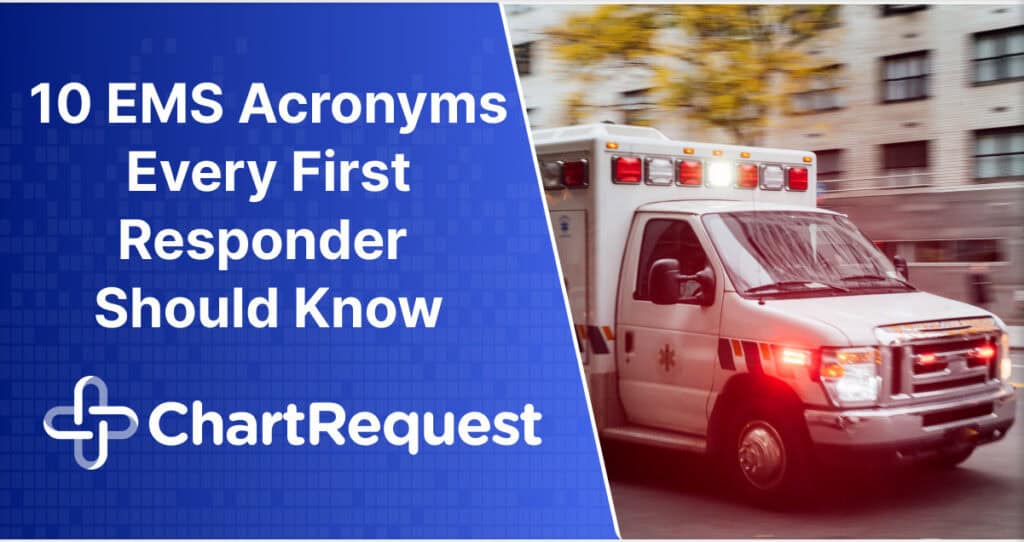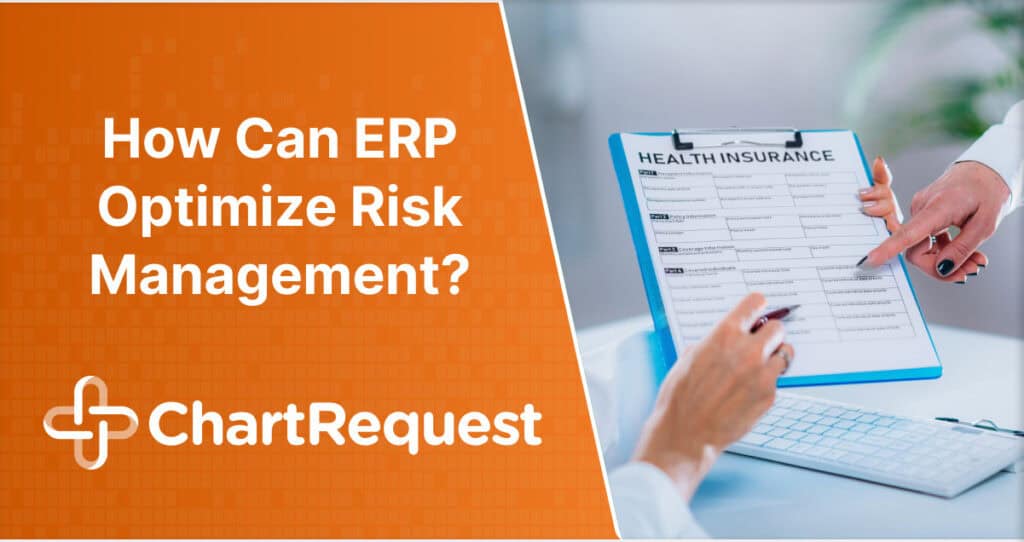Do you need help figuring out how to build a car accident case for your client? You’ve come to the right place.
In 2021, Texas alone recorded 15,769 serious injury car crashes that resulted in 19,456 people sustaining serious injuries. However, not all victims are fortunate enough to receive the compensation they deserve for such accidents. This usually happens because the victim’s attorney couldn’t build a car accident case strong enough to legally compel the at-fault driver to pay.
Securing medical evidence, among many other things, is essential to building your car accident case. It’s the backbone that supports your claim for damages.
If you’ve worked on several car accident cases, you know requesting medical records can feel like an uphill climb. Faxing forms and engaging in countless communications with medical record custodians are frustrations most law firms want to avoid.
It doesn’t have to be this way.
In this article, let’s talk about how the right medical records retrieval solution can streamline how attorneys build car accident cases.
Why Do You Need Medical Records to Build a Car Accident Case?
Medical documentation in injury claims for building a car accident case is one of the most essential pieces of evidence. They provide an objective view of the victim’s injuries and treatment.
Medical records help determine the extent of damages that should be awarded and serve as proof of the victim’s suffering. Proper medical documentation can help accurately depict the extent of severe injuries to determine compensation for medical expenses, lost wages, and pain and suffering.
Without proper medical evidence, it’s difficult to prove the extent of damages caused by the car accident. This is why obtaining digital medical records is crucial in building a strong case.
Why It Takes Time to Request Medical Record
Obtaining medical records is often a complex and time-consuming process. Several factors can contribute to the delay in releasing these crucial documents.
Let’s examine the various elements that can slow down the process of acquiring medical records. These factors create potential roadblocks in building a robust car accident case.
1. Paper-Based Systems
Many healthcare providers still use paper-based systems. Locating, copying, and sending paper records is a slow process. It’s not uncommon for this to take several weeks, especially if records are archived.
2. Legal Compliance
Adhering to legal and regulatory requirements, especially HIPAA compliance in record management, is essential but time-consuming. Healthcare providers must ensure that all disclosures of health information are lawful and protect patient privacy. This thoroughness, while crucial, adds to the time it takes to process requests.
3. Volume of Requests
Healthcare facilities often receive a high volume of medical record requests. The American Health Information Management Association (AHIMA) reports that a single hospital can process anywhere from a few hundred to over a thousand requests monthly. This volume can lead to backlog and delay in processing individual requests.
4. Complexity of Records
Getting medical records can be extensive and complex. Compiling these records also takes time if a patient has a long medical history or has been treated for multiple injuries.
Additionally, if the patient has seen multiple specialists, records must be gathered from each provider, further extending the timeline.
5. Patients Seeing Multiple Medical Specialists
When a patient has seen various specialists, coordinating and compiling records from different sources becomes a logistical challenge. Each provider’s record-keeping system might vary, making the consolidation of records a lengthy process.
6. Patient Authorization
Before any medical records can be released, patients must authorize their release. This process involves the patient reviewing and signing consent forms. Misunderstandings or delays in obtaining these authorizations can significantly slow down the record retrieval process.
A study shared on JAMA Network also indicates that a test result release can be delayed for as long as 14 days before the appointed clinician reviews it.
How Do Paper Records vs. Digital Records Impact Building a Car Accident Case
How medical records are requested and managed, whether through traditional paper records or digital means, can significantly impact the case’s progress. Let’s explore the pros and cons of each method.
Paper Records
Paper records have been the traditional mode of storing patient information across all sectors. Despite the rise of technology, the use of paper in U.S. offices still sees a 20% increase year over year.
This method, while time-tested, presents various challenges that could impede the swift progress of a car accident case. Below are the pros and cons of using paper records in car accident cases.
Pros:
- Familiarity: Many providers and patients are more accustomed to paper records, which can make their use more straightforward in some cases.
- Physical Control: There’s a tangible sense of control over the records when a provider can hold them.
Cons:
- Time-Consuming: The process of physically copying, mailing, or faxing records is slow. It can take weeks or even months to obtain all necessary records.
- Risk of Damage or Loss: Paper records can be easily damaged or lost during transit.
- Costly: Copying and mailing incur costs that can add up, especially for extensive medical histories.
- Data Breach: Paper- and film-based records comprised 65% of hospital data breaches, according to a study highlighted by Security Magazine.
Digital Records
The transition from paper to digital records is part of a broader movement in healthcare towards more efficient, secure, and accessible data management.
Pros:
- Speed: Electronic Release of Information (ROI) systems expedite the process of obtaining records. Our case study with Mid Atlantic Retina indicates digital solutions help providers release records 93% faster than paper-based requests.
- Accuracy and Completeness: Digital records reduce the likelihood of missing or incomplete information.
- Cost-Effective: Digitally sharing medical, billing, and imaging records often costs less because it eliminates the need for physical materials and postage.
- Accessibility: They can be accessed from anywhere, making coordination easier among different parties involved in a case.
Cons:
- Technical Challenges: Some may face a learning curve or technical difficulties in accessing or using digital systems.
- Data Security Concerns: While digital records are generally secure, there’s always a risk of data breaches, necessitating stringent HIPAA compliance and security measures. In the past two years, cyber attacks against law firms have surged over 60%. Notably, the top 100 firms have seen an alarming 73% increase in attack attempts.
Digitizing Your Record Management with ChartRequest
ChartRequest is a leading electronic Release of Information (ROI) solution that addresses the challenges associated with managing medical records. We help law firms across the country streamline the process of obtaining and organizing medical records securely and efficiently.
Let’s have an in-depth look at the benefits and features of ChartRequest that can help build your client’s car accident case.
Streamline or Automate Record Retrieval
ChartRequest’s medical records retrieval solution gets your records faster by providing healthcare providers with an easy way to release them. We offer custodians the choice between a Self-Service and a Full-Service partnership, so they either use our streamlined release of information software or let our team handle it for them.
How Does Getting Records With ChartRequest Work?
- Requesting Records: A member of your law firm can submit a request for medical records by providing your client’s information and a signed authorization form. Once submitted, a ChartRequest retrieval expert or the organization’s ROI staff will verify the authorization’s validity.
- Locating Records: A ChartRequest retrieval expert or the organization’s ROI staff will locate and verify all records for accuracy. In order to remain compliant, they must thoroughly examine whether the pulled records fulfill the request while adhering to the “Minimum Necessary” standard.
- Releasing Records: Once the records are gathered and verified, the professional handling your request will release them instantaneously. Now you can download the records and help your client get winning results!
How Does This Help Your Law Firm Build a Better Car Accident Case?
The transition to digital records, facilitated by ChartRequest, offers numerous advantages for law firms:
- Time Efficiency: By reducing the time spent on retrieving records, law firms can allocate more attention to case analysis and providing representation for their clients. This shift allows for a greater emphasis on delivering quality legal services and advocating for the best interests of those they serve.
- Accuracy and Completeness: Digital records are inherently more reliable and accurate, making them indispensable in constructing a solid legal argument.
- Cost-Effectiveness: By reducing the need for physical handling, copying, and mailing of records, ChartRequest helps in cutting down operational costs.
- Improved Accessibility: Digital records can be accessed from anywhere, making it easier for legal teams to collaborate and review case materials.
- Data Breach Secure Platform: ChartRequest’s HIPAA-compliant platform ensures robust security measures are in place to prevent data breaches.
- White-Glove Support: Check out our reviews on Google to see what requestors think about ChartRequest. Our exceptional support has helped us achieve an average rating of 4.8 stars!
Step-by-Step Guide: How to Build a Car Accident Case with ChartRequest
Building a car accident case requires meticulous management of medical records. ChartRequest simplifies this process with a straightforward, efficient approach. Here’s a step-by-step guide on how to utilize ChartRequest for building a strong car accident case.
1. Initiate a Record Request
The first step in building your case is to gather the necessary medical records. With ChartRequest, this process begins with their HIPAA-compliant forms, designed to speed up the request process. These forms ensure that all the necessary permissions are in place, respecting patient information’s privacy and legal requirements.
2. Track and Manage Record Retrieval
After submitting the request, ChartRequest’s platform allows users to track the progress of their ROI. This feature is pivotal in building a car accident case, as it provides transparency and timely updates on where the records are in the retrieval process. You can monitor the status in real time to ensure you’re always informed about the availability of crucial evidence.
3. Integrate Digital Records into Case Preparation
Once the records are retrieved, the next step in building your car accident case is integrating these digital records into your case preparation. ChartRequest provides these records in a digital format, making it easy to organize, review, and reference them as needed.
Your team can seamlessly incorporate these digital records into legal documents, presentations, and other case materials. This streamlines your preparation process, allowing for a more efficient and organized approach to building your case.
Ready to Build Your Next Car Accident Case?
Out of the 400,000 yearly personal injury claims filed in the United States, experts attribute 52% to car accidents. Even if each of these claims only needed records from one provider, it would translate to unfathomable hours of tedious retrieval labor.
For attorneys dedicated to building strong car accident cases, ChartRequest is a strategic asset that elevates case management quality.
Explore ChartRequest solutions for your law firm, and transform how your team gets the records to build car accident cases. Join the other 12,000 legal professionals who are modernizing their medical records retrieval processes.
Want to fully automate the retrieval of your clients’ medical records? Set up a free consultation to see if Full-Service is right for your law firm!








